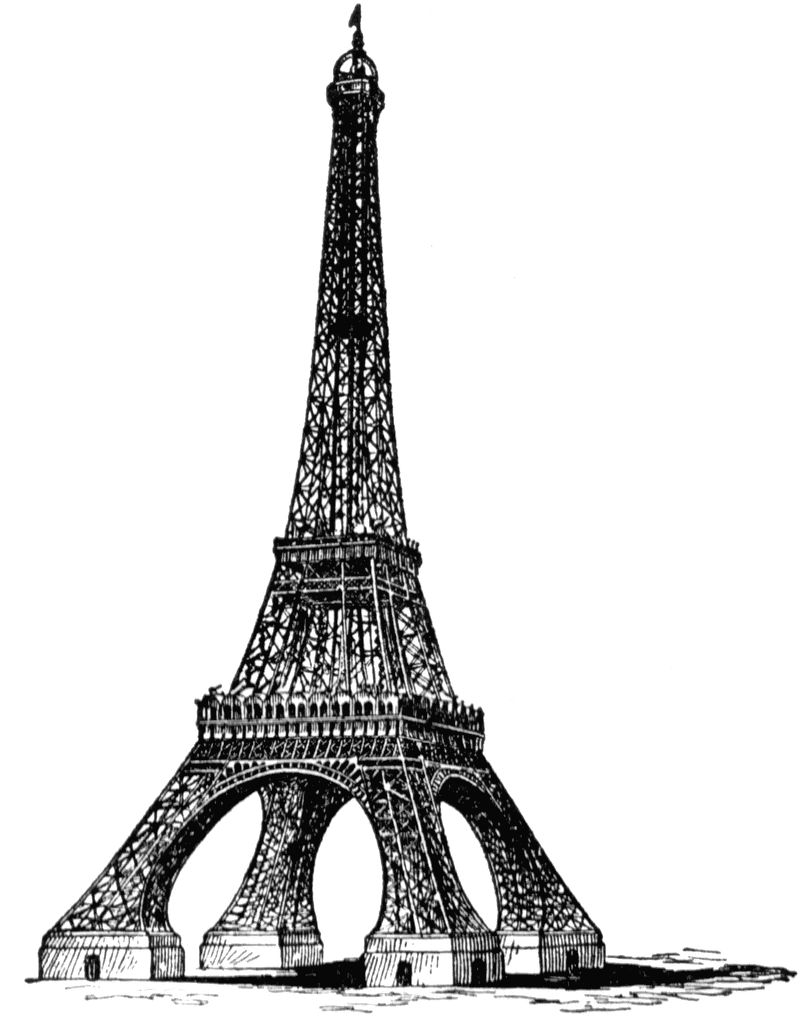Although the Notre Dame Cathedral and the Eiffel Tower are both icons of Paris, France, they were built during two extremely different time periods, resulting in different architectural styles, techniques, and responses from the public of France and the world…
The Notre Dame Cathedral was constructed as a replacement for the original Paris cathedral, which was deemed unworthy by Maurice de Sully, newly appointed Bishop of Paris and the designer behind the Notre Dame Cathedral. The original was therefore demolished, and new plans for a bigger, better cathedral took shape.
Notre Dame Cathedral was constructed in phases beginning officially in 1163 and finally completed in 1345. It was one of the first buildings to employ the techniques of flying buttresses, which are visible exterior supports for the walls. These were built because the walls were so heavy and exerting so much pressure they began to develop stress fractures. It is odd that the flying buttresses, used merely for strength and not visual appeal, are one of the most recognizable elements of design of the Notre Dame Cathedral.
Another famous attribute of the Notre Dame Cathedral is the stained glass windows, and more specifically, it’s rose windows (pictured). In places of worship, stained glass windows had 2 purposes: one, for beauty and light, but on a more practical note, to illustrate Biblical events and figures for illiterate people incapable of reading the Bible.
This structure is considered to be one of the finest examples of French Gothic architecture. However, this beautiful place of worship almost didn’t last. It suffered extreme vandalism and destruction during the French Revolution of the 1790’s, but was thankfully later restored.
Centuries later, another Parisian landmark was created: the Eiffel Tower. However, this was not meant for religious use at all; rather it was originally supposed to be a temporary monument for the World Fair.

Designed by Gustave Eiffel and built between 1887 and 1889, the Eiffel Tower (pictured) is perhaps the most controversial of French structures. Eiffel was highly criticized for the “daring shape” of the Tower, which was originally labeled as an unnecessary eyesore for the people of Paris. It is ironic how now it is one of the most recognized and visited monuments in the world today.
The shape of the Eiffel Tower was carefully calculated as an exponential curve designed to be the most wind-resistant. Built of iron and rivets, the structure weighs in at 10,000 tons, and is has a surprisingly low density thanks to the brilliant engineering of Gustave Eiffel.
When it was completed, it was the tallest tower in the world, equivalent to 81 stories, only to be surpassed by the Chrysler Building in New York City in 1930.
It is strange how two monuments of Paris, one held high in religious awe and grandeur, and the other bemoaned by its neighbors as a visual disaster, both have become two of the most famous examples of fantastic architecture in France, and the modern world.

 School of Athens by Raphael
School of Athens by Raphael 
 Venus de Milo
Venus de Milo

 looking up the skirt of the Eiffel Tower (that's what it felt like)
looking up the skirt of the Eiffel Tower (that's what it felt like)
















